Japan [Niigata] Beyond ordinary itineraries vol.4 Niigata prefecture Niigata city
The Power of Fermentation Can Also Connect People, Events and Products
2017.04.10
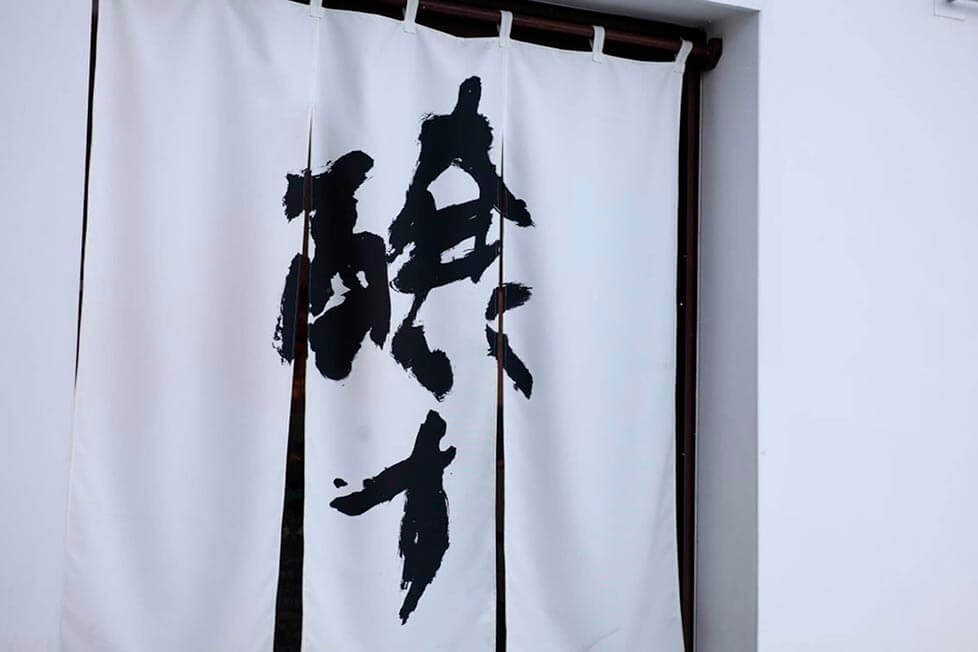
Mr. Yosuke Tanaka, president of Imayotsukasa-shuzo
Niigata-shi: A town of richly fermented culture.
Like other historical cities in Japan, the circumstances surrounding Niigata-shi have drastically changed. Currently, Niigata-shi is focusing on their gastronomic culture as it is the leading sake producing area in Japan. To make sake from rice, as well as to make wine from grape juice and to make bread rise, the process of fermentation is essential. Japanese cuisine would not be so delicious if our ancestors had not learned the process of fermentation. Soy sauce, miso (trans. soybean paste), natto (trans. fermented soybeans) are also made with that process. In technical terms, fermentation involves converting materials by making good use of their various microorganisms. To make delicious food or drink by fermentation, it is important to consider and take advantage of the functions and merits of each microorganism. It is said that we are only aware of only five to ten percent of all the microorganisms that exist in the world. Thus the power of microorganisms and their power through fermentation have enormous potential. The same goes for Niigata-shi. There are residents who produce, cultivate, runs shops and restaurants, work or who love the products and their hometown. They all have certain functions and merits. If they work in harmony influencing each other just like microorganisms work for fermentation, the town becomes more and more attractive. In this regard, the metaphor of fermentation encapsulates the power of Niigata-shi.
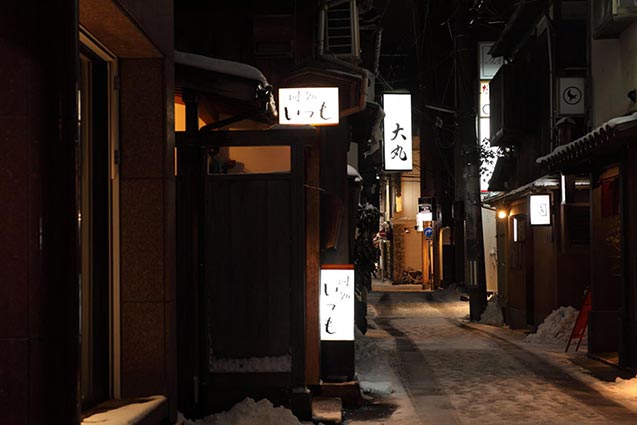
After spending the daytime at marvelous factories in the Tsubame-Sanjo area, we moved northward to Niigata-shi, the coastal zone along the Sea of Japan, to seek gastronomic delights. To go to Niigata-shi from the Tsubame-Sanjo area it takes about half an hour by car. If you take Joetsu-Shinkansen, it takes only 12 minutes.
Niigata-shi is known as city of gastronomy with fish (caught in the Sea of Japan), rice, vegetables, fruits and sake. From the 17th century to the end of the 19th century, when the method of transportation was mainly by ship, Niigata-shi was a prosperous as port city thanks to the Kitamae-bune (trans. northern-bound ships) that visited. Kitamae-bune are merchant ships founded by a great merchant in the Hokuriku area. They carried various kinds of products that the merchants bought and sold at several ports. Simply put, it was like a mobile market. It went from the north part of Japan such as Hokkaido and Tohoku, along the coast of the Sea of Japan passing the Seto Inland Sea and the coast of the Pacific to Osaka. People have always tended to gather where there is good business. The port city of Niigata was not the exception and was very prosperous. In particular, in Frumachi town there were many restaurants where Geiko who were trained in traditional dancing, music and singing entertained customers, just like Gion in Kyoto.
Niigata-shi’s Unique Events
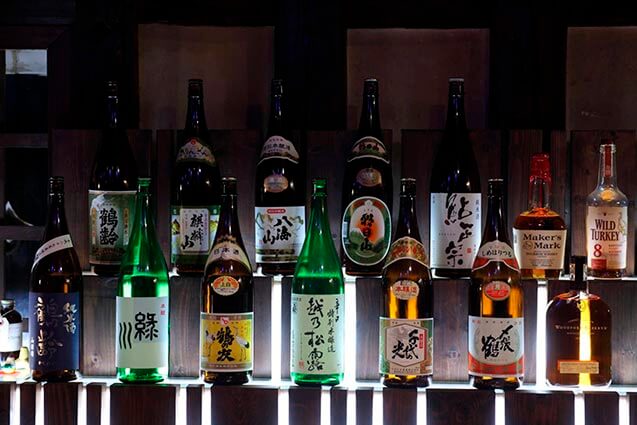
The event called “Furumachi Hanamachi Burari-zake” (trans. Barhopping in Furumachi, an old Geisha district) has been held annually over the past eight years. For this event, a map with four tickets attached is sold. One ticket is for one drink and one dish. In 2016, 80 restaurants and bars were on the list of participants. Restaurants in Japan are well known for the plastic food models placed outside which make it clear what kind of food is offered. Elegant and high quality restaurants, however, do not have this. Here, too, most of the doors of restaurants are closed and sometimes look so elegant and unfriendly. This ticket allows them to show their warm and welcoming side by providing you with the opportunity to make a trial visit.
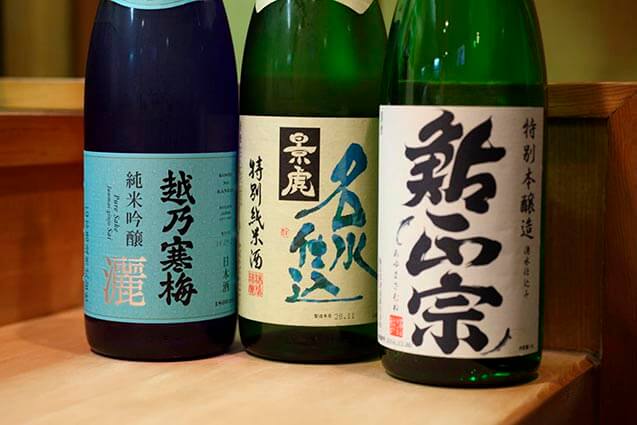
Niigata is a leading producer of rice and sake. The sake lists are huge from nationally famous ones to the ones rarely seen outside Niigata.

Try the local sake first. It goes well with dishes cooked with the local ingredients and local recipes.
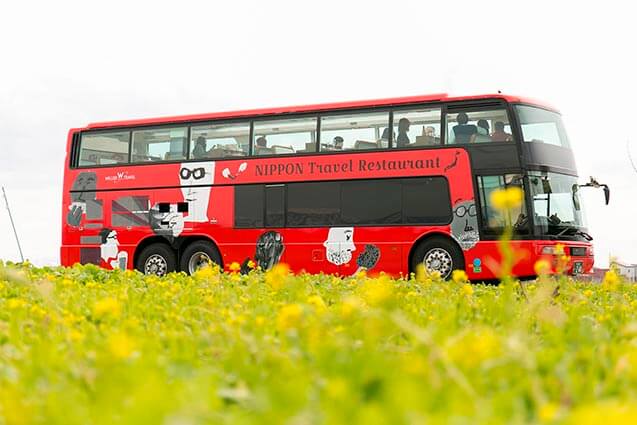
A special sightseeing bus tour called the “Restaurant Bus” started in 2016 here in Niigata. The unique aspect of this tour is the double-decker bus itself. These days, double-decker bus is not so rare. However, a double-decker bus whose lower deck is converted into a fully equipped kitchen is rather unique! The top deck is converted into a restaurant which offers French and Italian dishes cooked with local ingredients fresh out of the kitchen! Good restaurants are expected to have extravagant interiors, decorated with things such as gorgeous chandeliers or paintings. On the bus, the beautiful scenery of countryside in Niigata embellishes the dining experience. The tour includes the visits to the places where ingredients used by the restaurant are produced, such as sake breweries and farmhouses. Some activities are also included. In 2017 the Restaurant Bus offers several courses from April to June. For the detailed information about each tour, the schedule and the reservation, take a look at http://willerexpress.com/en/restaurantbus/
The Nuttari area
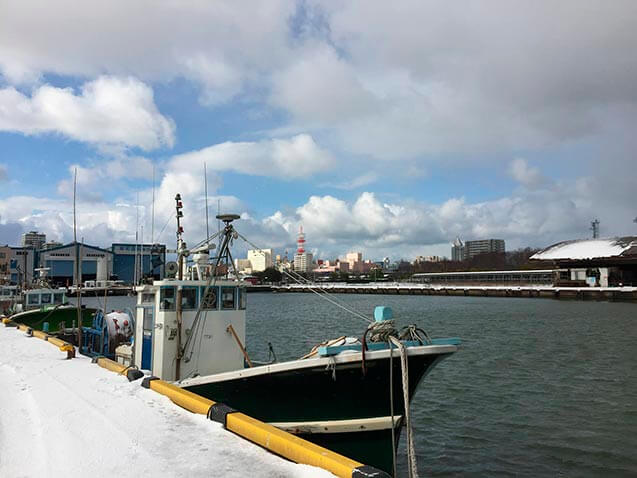
The Nuttari area is located about 20minutes on foot from Niigata Station and was once a busy district as a port city receiving regular rice shipments. In 1960s the streets (developed on reclaimed moats) were lined with over a hundred shops owned by neighboring farmers and fishermen. It was like a local market. In 2000s the circumstances here have also changed. While the number of supermarkets has increased, the number of small businesses in this area has decreased resulting in empty, shuttered streets.

However some changes have been seen since 2010, as new cultures appear along the old desolated high street. Young artists have renovated the inner part of the old shops and started their own businesses.
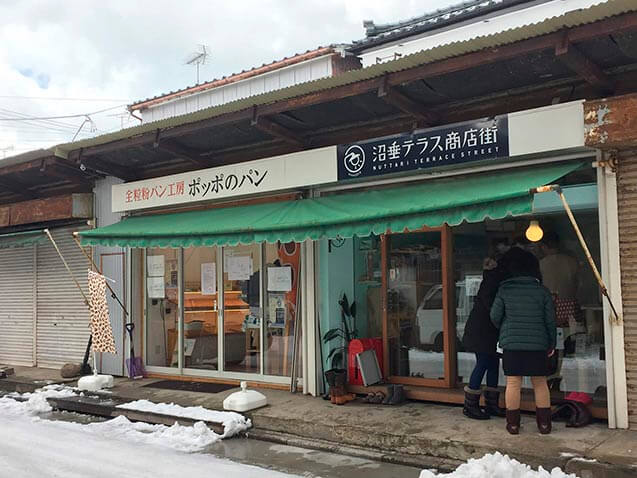
In 2015, this high street was converted into the street called “Nuttari Terrace”, where there are cafés, knick-knack shops, flower shops, jewelry shops, studios and ateliers of artists, as well as vegetable and butcher shops. It has become a district which is a lot of fun to explore.

The Nuttari area has also been known for supporting the food culture of Niigata by producing food and drinks made through fermentation. The climate, cold with the sea breeze in Winter and hot in Summer, is suitable for fermentation. Sake breweries, miso factories, soy sauce factories once lined up along the Kurinoki River (which has since been remodeled into a national road) and the products and ingredients were transported by waterway. Once there were 40 to 50 factories and food shops reliant on the fermentation process. Now only six remain, including a sake brewer and a miso factory about ten minutes walk from Nuttari Terrace. We were able to visit these two factories.
Imayotsukasa-shuzo, a sake brewer
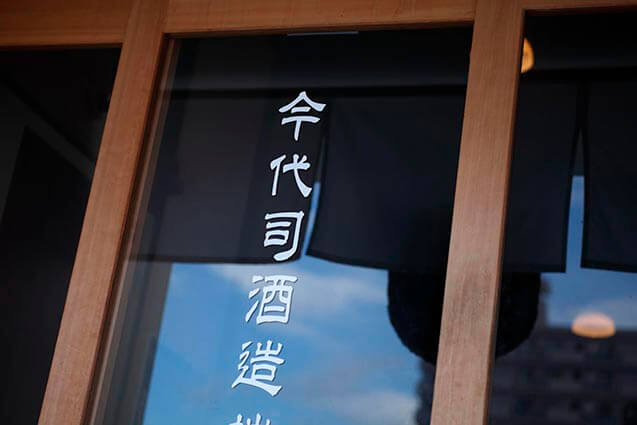
The very astonishing old building of Imayotsukasa-shuzo made our hearts beat. Before this brewery specialized in sake brewing in the end of the 19th century, the family was one of the leading merchants in the area that managed the sake dealer, inns and restaurants since 1767, when the town of Niigata was prosperous due to Kitamae-bune.
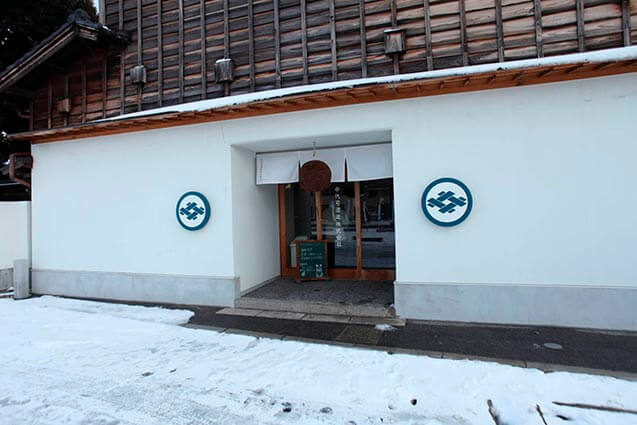
The wooden old building is said to be built in the Meiji Era (1868-1912). One step inside the building, passing through the noren (trans. a vertical fabric hanging in front of the entrance), you may feel as if you had travelled into the past. You will see an old signboard, old tools and you will detect the scent of wood and sake brewing.
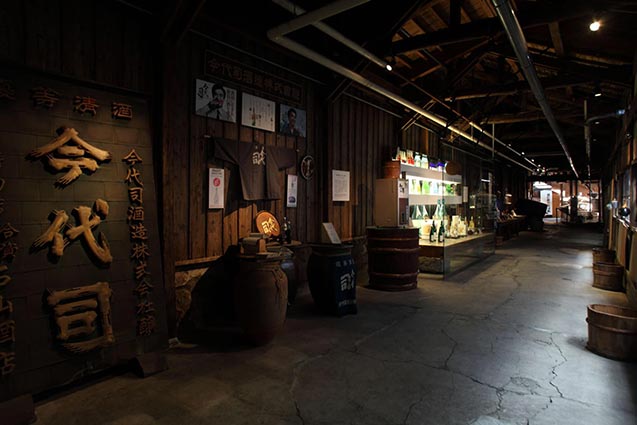
This old building is also used as a set for film. However, the Mr. Tanaka said that the building is actually not completed. Following the Japanese traditional philosophy, “the completion is the beginning of the collapse,” the family is leaving the incomplete areas as they are.
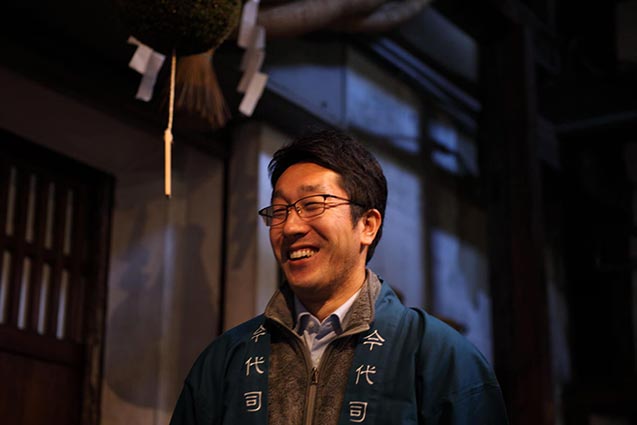
Mr. Yosuke Tanaka, president of Imayotsukasa-shuzo
Among many traditional shops, that try to protect traditions of old, Imayotsukasa-shuzo is always taking on the challenge of new projects. For example, they made sake collaborating with the agricultural corporation of JR East (railroad company) and other brewers using only the rice harvested in Niigata prefecture called “Niigata Shuppoppo” (cf: Shuppoppo is an onomatopoeia word for the sound that a locomotive train makes). They also make sake named Omusubi (trans. rice ball) collaborating with local farmers and restaurants. (cf: A rice ball is usually called in two ways in Japanese: ‘onigiri’ or ‘omusubi’, which are completely interchangeable. ‘Onigiri’, grammatically speaking, consists of two elements: ‘o’ which is an exalted prefix which shows respect and ‘nigiri’ which means ‘grasping’. On the other hand, ‘omusubi’ consists of the same ‘o’ and ‘musubi’ which means ‘connecting’. Now you know why Imayotsukasa-shuzo chose the name ‘Omusubi’ for their sake!) And this is just the tip of the iceberg! Imayotsukasa-shuzo not only produces sake through the fermentation process, but also it is playing the role of a microorganism for the fermentation of the area, to making it a better place.
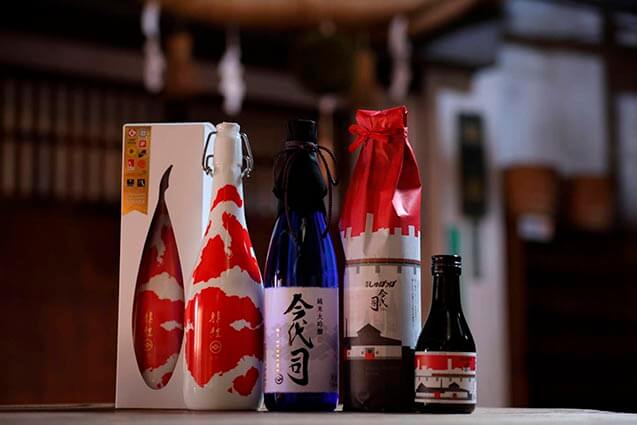
Various bottles of sake of Imayotsukasa-shuzo including the “carp sake” (left)
When sake was more valuable, some brewers wanted to maximize their profit, and so they diluted sake with water. As even sake dealers diluted their products, it got to the point where sake became so watery that goldfish could stay alive in it! As a result, bogus sake was called “gold fish sake”. Imayotsukasa-shuzo made a series of sake in a bottle that looks like a beautiful nishikigoi (trans. brocaded carp) to convey the message that they have never made gold fish sake but more valuable “carp sake.” This bottle won Good Design Award in Japan and also won prizes in France, USA, Germany, Italy, UK, Belgium and Hong Kong.
You must see Imayotsukasa-shuzo’s showroom which showcases all of their sake products. You can also taste their sake. The brewery is open to the public for the brewery tour. An English tour, provided by an American staff member is available, but reservation beforehand is required.
Imayotsukasa-shuzo
1-1 Kagamigaoka, Chuo-ku, Niigata-shi, Niigata prefecture
☎ 025-245-3231
Open from 9:00 to 17:00
http://www.imayotsukasa.com/index_eng.htm
Minemura Jozo -miso factory-
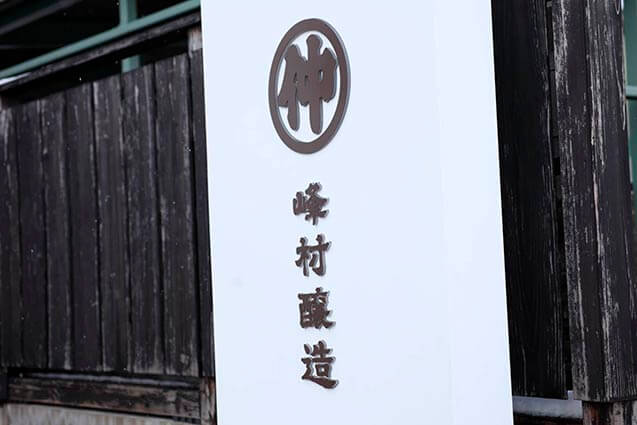
A traditional basic Japanese style meal consists of rice, miso soup and pickles, which is like the Western staples foods: potatoes (or bread), meat and salad. Miso soup is made simply by dissolving miso in boiling water, with dashi broth added, mainly made with kombu (trans. dried kelp) or katsuobushi (trans. bonito fish flakes). Tofu (trans. bean curd) cut in small cubes, and various kinds of vegetables, clams or seaweed are popular ingredients. With all these flavors in mind, what then is miso? In short, it is fermented soybean paste. Miso was something indispensable for home cooking, and it used to be eaten every day in one way for another at home. Miso can be used as sauce and as a base for pickling and marinating, for example. As the production process is simple, it was once made at home. Soak soybeans in water, and then boil and mash them. Add water and salt, and stir the paste continuously. Crumble koji (trans. steamed rice that has koji mold cultivated on) and mix well until the texture becomes smooth. Put the paste into a container and wait for 6 to 12 months, while it ferments. If you have seen miso sold in a shop, you may have noticed that there are various types of miso in different colors, from whitish ones to blackish ones, whose taste is also different. Whitish ones tend to be mild and sweet, on the other hand, blackish ones tend to be salty and strong. This difference comes from various factors: the type of koji mold, the amount of salt added and the length of fermentation. Miso differs by who makes it and the area in which it is developed.

Mr. Takeshi Shimura, president of Minemura Jozo
Minemura Jozo, the miso maker, was founded in 1905. As the climate of this area is cold in Winter with an onshore breeze and hot and humid in Summer, the conditions are advantageous for fermentation. As a result, there used to be more than 40 factories in which alcoholic beverages and food were made through the fermentation process in the Nuttari area during its golden era. Sadly, the number of these factories decreased according to the change of times and people’s lifestyle. Minemura Jozo, together with Imayotsukasa Shuzo, is trying to rehabilitate this area as “Town of Fermentation”.

Mr.Shimura, the president, gave us a tour to show us the processes of miso making. This factory is also open to the public. Visitors can also try miso making and can bring the miso that they make back home as souvenir. Any visitors can go on this tour miso making process, save for those who have eaten natto or who work at natto factories. Natto is a food made through the fermentation process with microorganisms called Natto-kin (trans. grass bacillus), which are very strong bacterium. If the miso as a paste comes in contact with this microorganism, even just a small amount, it will be converted to natto!
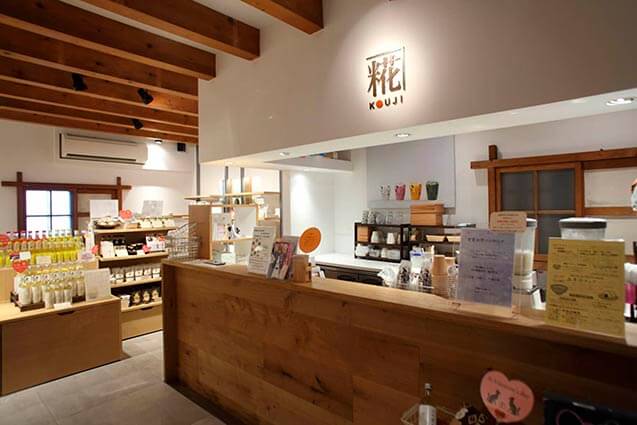
The interior of the historical building was renovated into a shop.
“What we do is to educe umami (trans. savory taste) through fermentation process,” says Mr. Shimura. Minemura Jozo produces not only miso and miso regarded food such as pickles and foods marinated in miso, but also various products made with koji that have been inoculated with fermentation process. They are available in their shop, which is in a historical building built at the end of the 19th century.
Minemura Shoten
2-3-44, Akashi, Chuo-ku, Niigata-shi, Niigata prefecture
☎ 025-247-9321
http://www.minemurashouten.com/
About the project “Beyond ordinary itineraries”
vol.1 The Chichibu area in Saitama prefecture
A great attempt to make a new tradition in the Chichibu area
-Venture Whisky, Ichiro’s Malt-
A great attempt to make a new tradition in the Chichibu area
-Maple Base-
A great attempt to make a new tradition in the Chichibu area
-House of Miyamoto, an old farmhouse-
A great attempt to make a new tradition in the Chichibu area
-Chichibu Meisen House-
(The Chichibu area in Saitama prefecture Booklet PDF)
(The Chichibu area in Saitama prefecture Booklet PDF [for printing])
vol.2 The Hokuso area in Chiba prefecture
Tradition - inheriting the spirit and soul-
(The Hokuso area in Chiba prefecture Booklet PDF)
(The Hokuso area in Chiba prefecture Booklet PDF [for printing])
vol.3 Niigata prefecture Tsubame-Sanjo
The place for Artisans who breathe life into their craft
vol.4 Niigata prefecture Niigata city
The Power of Fermentation Can Also Connect People, Events and Products
(Niigata prefecture Niigata city&Tsubame-Sanjo Booklet PDF)
(Niigata prefecture Niigata city&Tsubame-Sanjo Booklet PDF [for printing])
vol.5 Kasumigaura and Mt.Tsukuba area in Ibaraki Prefecture
Fascination of the area is like a constellation, it comes out when the dots are connected.
(Kasumigaura and Mt.Tsukuba area in Ibaraki Prefecture Booklet PDF)
(Kasumigaura and Mt.Tsukuba area in Ibaraki Prefecture Booklet PDF [for printing])
This project is supported by the Kanto Bureau of Economy, Trade and Industry.









